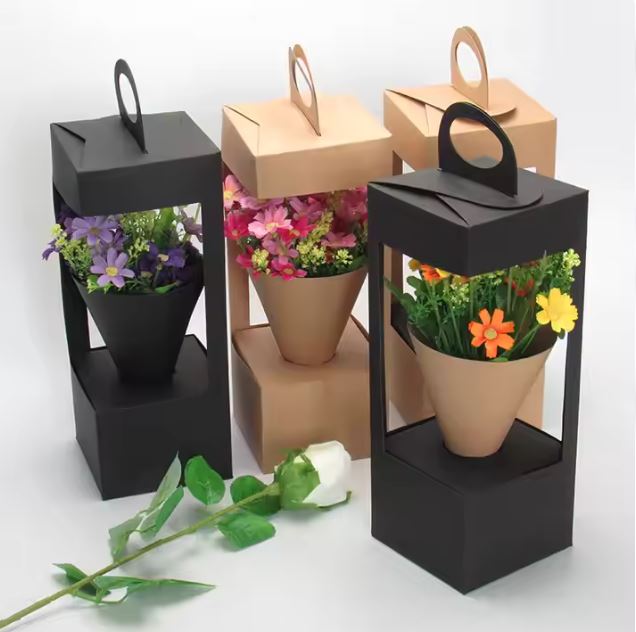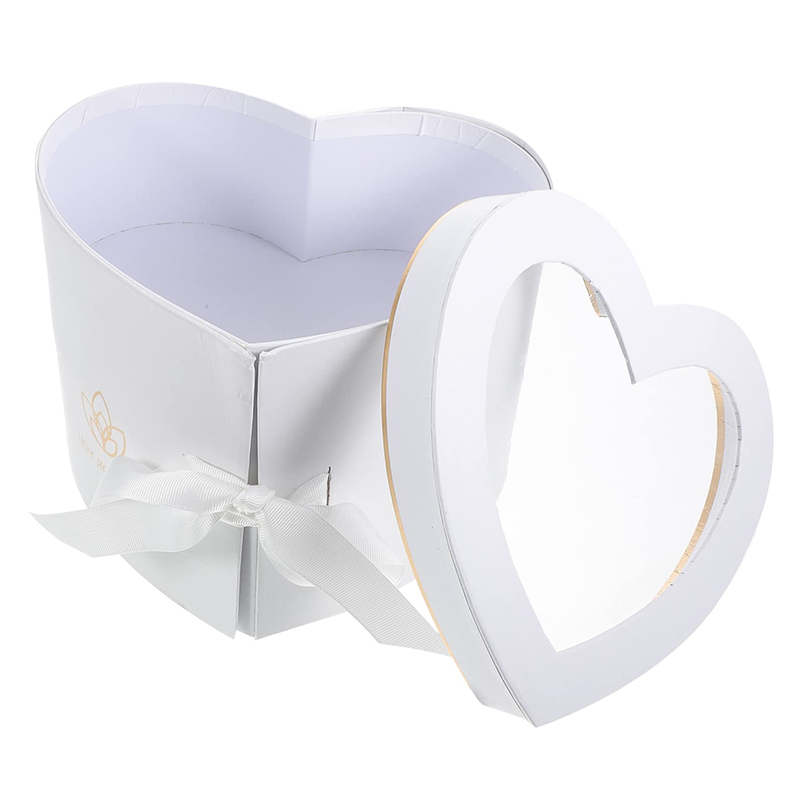- All
- Product Name
- Product Keyword
- Product Model
- Product Summary
- Product Description
- Multi Field Search
Views: 202 Author: XianDa Publish Time: 2024-12-27 Origin: Site

Content Menu
● How to Build a Flower Box on a Slope
● Understanding the Challenges of Sloped Gardens
● Planning Your Sloped Flower Box
>> Choosing the Right Location
● Construction Methods for Sloped Flower Boxes
● Step-by-Step Guide to Building a Basic Sloped Flower Box
● Incorporating Flower Paper Boxes on Slopes
● Plant Selection for Sloped Flower Boxes
Building a flower box on a slope can be a challenging but rewarding project that adds beauty and functionality to your outdoor space. Whether you're dealing with a gentle incline or a steep hillside, there are various methods to create stunning flower boxes that thrive in sloped environments. This comprehensive guide will walk you through the process, provide tips and tricks, and showcase inspiring examples to help you create the perfect flower box for your sloped garden.
Before diving into the construction process, it's essential to understand the unique challenges presented by sloped gardens:
1. Uneven water distribution
2. Soil erosion
3. Difficulty in maintaining level planting surfaces
4. Limited usable space
By addressing these challenges through proper design and construction techniques, you can create beautiful flower boxes that flourish on even the steepest slopes.
The first step in building a flower box on a slope is to assess the grade of your terrain. Use a level or slope measuring tool to determine the angle of the incline. This information will help you decide on the most suitable construction method for your flower box.
Select a location that receives adequate sunlight for your chosen plants and offers easy access for maintenance. Consider the view from different angles and how the flower box will integrate with your existing landscape.
When designing your sloped flower box, consider the following factors:
- Size and shape
- Materials (wood, stone, or composite)
- Drainage requirements
- Accessibility for planting and maintenance
- Visual appeal
Terracing is an excellent method for creating level planting areas on slopes. This technique involves building a series of stepped platforms that follow the contour of the hill.
To create terraced flower boxes:
1. Mark out the area for each terrace level.
2. Excavate the slope to create level surfaces for each terrace.
3. Build retaining walls using materials like stone, timber, or concrete blocks.
4. Fill each terrace with soil and compost.
5. Install drainage systems to prevent water accumulation.


Angled flower boxes are designed to sit flush against the slope, creating a natural-looking integration with the landscape.
To build an angled flower box:
1. Measure and cut wooden boards to fit the slope angle.
2. Assemble the box frame, ensuring the top edges are level.
3. Install a sturdy base and drainage holes.
4. Secure the box to the slope using stakes or anchors.
5. Fill with soil and plant your chosen flowers.
Stepped flower boxes offer a visually appealing solution for steeper slopes. This method involves creating a series of individual boxes that step down the hillside.
To construct stepped flower boxes:
1. Build individual boxes of varying heights to accommodate the slope.
2. Install the boxes in a stepped formation, ensuring each is level.
3. Secure the boxes to the slope and to each other for stability.
4. Add soil and plants to each box.
When building your sloped flower box, you'll need the following materials and tools:
- Lumber (cedar or pressure-treated wood)
- Screws and nails
- Landscape fabric
- Gravel for drainage
- Potting soil and compost
- Measuring tape
- Level
- Saw
- Drill
- Shovel
- Hammer
- Safety gear (gloves, goggles, etc.)
1. Measure and mark the area for your flower box.
2. Clear the area of grass, rocks, and debris.
3. Level the ground as much as possible, creating a slight slope for drainage.
4. Cut your lumber to size, including side panels and support posts.
5. Assemble the box frame, ensuring it's square and level.
6. Install support posts at the corners and along the sides for added stability.
7. Attach the side panels to the frame and posts.
8. Line the bottom of the box with landscape fabric to prevent soil erosion.
9. Add a layer of gravel for drainage.
10. Fill the box with a mixture of potting soil and compost.
11. Plant your chosen flowers and water thoroughly.


- Use rot-resistant wood or apply a wood preservative to extend the life of your flower box.
- Install a drip irrigation system for easy watering on steep slopes.
- Choose plants that are well-suited to your climate and the amount of sunlight the area receives.
- Incorporate trailing plants to soften the edges of your flower box and create a cascading effect.
- Consider using a flower paper box supplier for temporary or portable flower displays on your slope.
To keep your sloped flower box looking its best:
- Regularly check for signs of erosion or shifting soil.
- Prune and deadhead plants as needed.
- Monitor soil moisture levels, especially during dry periods.
- Fertilize plants according to their specific needs.
- Inspect the box structure periodically for any needed repairs.
While permanent flower boxes are ideal for long-term landscaping, flower paper boxes can offer a flexible and eco-friendly alternative for temporary or seasonal displays on slopes. Here's how you can incorporate flower paper boxes into your sloped garden:
1. Choose sturdy, weather-resistant flower paper boxes from a reputable flower paper box supplier.
2. Create small, level areas on your slope using stakes and string to guide you.
3. Place the flower paper boxes on these level spots, filling them with lightweight potting mix.
4. Secure the boxes to the ground using landscape pins or by partially burying them.
5. Plant your chosen flowers or use pre-planted arrangements from your flower paper box supplier.
Benefits of using flower paper boxes on slopes:
- Easy to move and rearrange
- Biodegradable and environmentally friendly
- Available in various sizes and designs
- Perfect for seasonal displays or events
- Can be used to test different planting arrangements before committing to permanent structures
Choosing the right plants for your sloped flower box is crucial for its success. Here are some excellent options that thrive in sloped environments:
1. Deep-rooted plants: These help stabilize the soil and prevent erosion. Examples include:
- Echinacea (Coneflower)
- Agastache (Hyssop)
- Veronicastrum (Culver's Root)
- Cardoons
- Comfrey
2. Mat-forming plants: These create a dense ground cover that helps prevent weed growth and soil erosion:
- Creeping Phlox
- Sedum (Stonecrop)
- Thyme
- Ajuga (Bugleweed)
3. Drought-tolerant plants: Since slopes tend to drain quickly, these plants are ideal:
- Lavender
- Rosemary
- Yarrow
- Russian Sage
4. Cascading plants: These add visual interest and help soften the edges of your flower box:
- Trailing Lobelia
- Bacopa
- Calibrachoa (Million Bells)
- Trailing Petunias
5. Native plants: These are adapted to your local climate and often require less maintenance:
- Black-Eyed Susan (for North American gardens)
- Coreopsis
- Salvia
- Goldenrod
Remember to consider the sunlight exposure, soil type, and climate when selecting plants for your sloped flower box. A mix of different plant types will create a visually appealing and ecologically balanced garden.
Building a flower box on a slope may present some challenges, but with careful planning and execution, you can create a stunning garden feature that enhances your outdoor space. Whether you choose to build terraced, angled, or stepped flower boxes, or incorporate flower paper boxes from a reliable supplier, your sloped garden can become a beautiful and thriving oasis of color and life.

By following the guidelines and tips provided in this article, you'll be well-equipped to tackle the unique challenges of gardening on a slope. Remember to prioritize proper drainage, soil stabilization, and plant selection to ensure the long-term success of your sloped flower box. With a little creativity and effort, you can transform even the steepest hillside into a vibrant and eye-catching garden feature that will be the envy of your neighborhood.
Word count: 1,912
Citations:
[1] https://foodgardening.mequoda.com/daily/garden-design/how-to-create-built-in-hillside-planter-boxes-for-sloped-yards/
[2] https://www.youtube.com/watch?v=cLmUnNqnORo
[3] https://www.provenwinners.com/learn/erosion-control-plants
[4] https://www.bhg.com/gardening/landscaping-projects/landscape-basics/slope-solutions/
[5] https://www.dripworks.com/bloghow-to-build-raised-garden-beds-on-a-slope-or-hillside/
[6] https://harmonyinthegarden.com/2019/07/have-a-sloping-garden-tiers-can-stop-the-tears/
[7] https://www.youtube.com/watch?v=tsCq5YhFloo
[8] https://www.youtube.com/watch?v=wXJa5wTPZz8
[9] https://www.themiddlesizedgarden.co.uk/how-to-plant-on-a-slope/
[10] https://learn.eartheasy.com/articles/how-to-build-a-raised-garden-bed-on-sloping-uneven-ground/